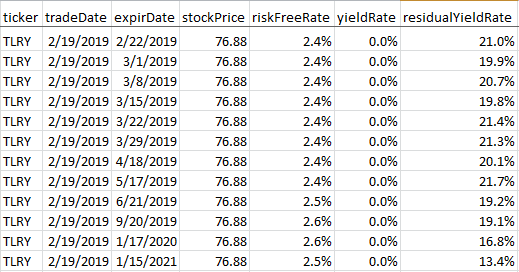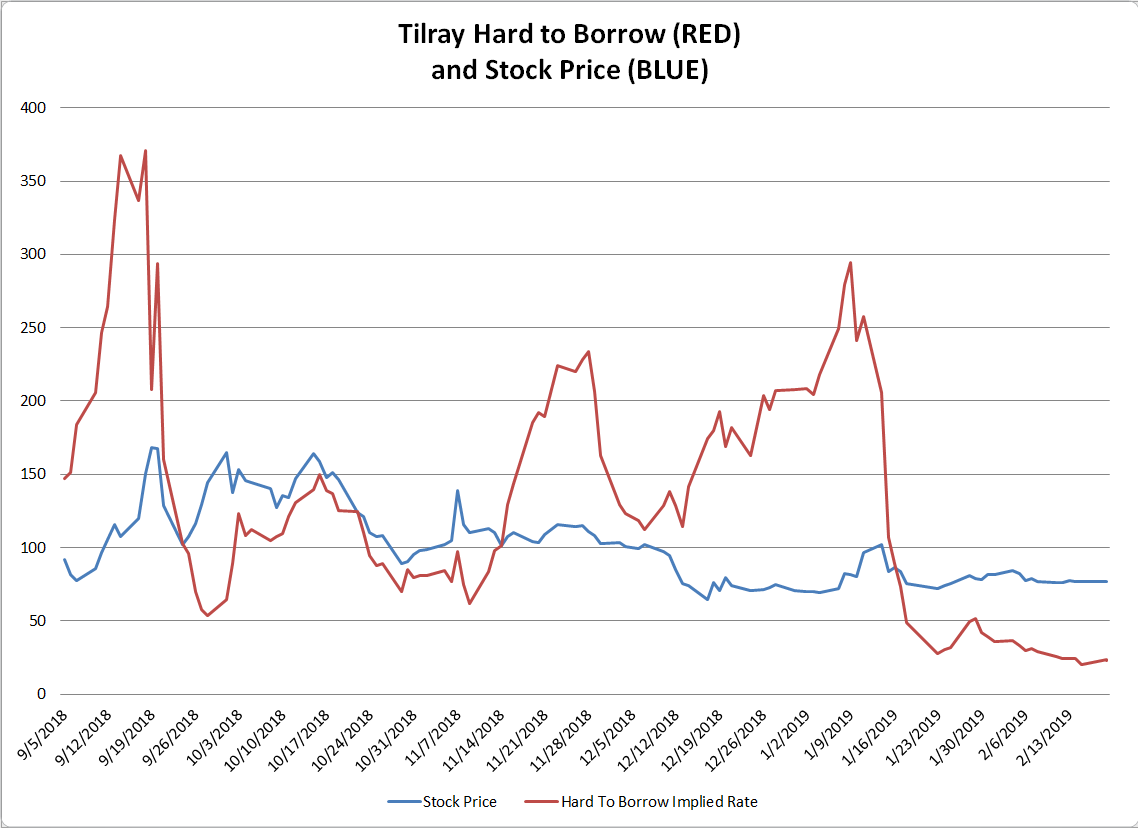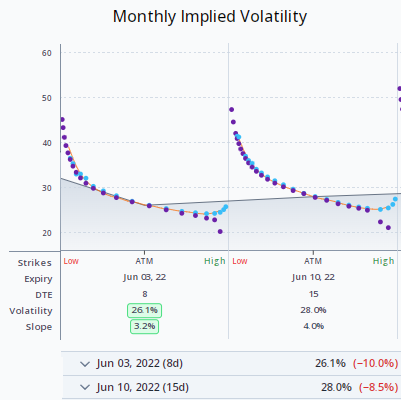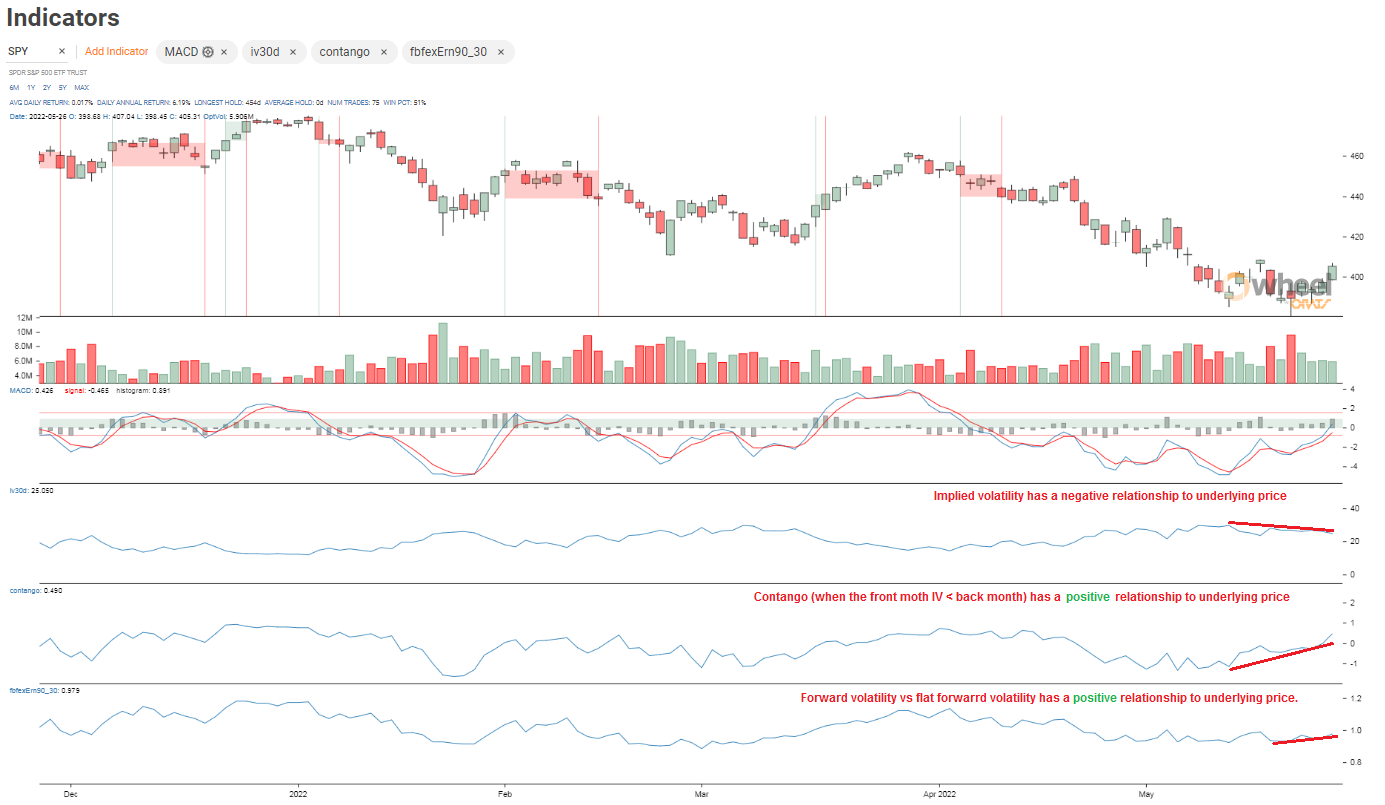Indicators
Wednesday, February 20th 2019
Understanding Options: Why Do Calls and Puts Have Different Implied Volatility?
All of the causes of IV imblances can be isolated to give what should be got, call and put implied volatilties that line up. In options trading, call and put implied volatilities should be made equal. Here's how.
Summary
In options trading, calls and puts should have the same implied volatility, which describes the portion of the options price attributable to the movement in the stock. Imbalances in implied volatility can be caused by factors such as interest, dividends, and liquidity. ORATS works to isolate these factors and solve for the residual yield that lines up call and put implied volatilities. By doing so, call and put implied volatilities can be made equal.
Calls and puts should have the same implied volatility. The implied volatility should describe that portion of the options price attributable to the movement in the stock, ie the implied volatility. If your implieds are different you have not done enough work to identify what is causing the imbalance.
The most obvious culprits causing calls and puts to have different IVs are interest and dividends. Interest rate assumptions can vary over stocks, expirations and even strikes. Stocks can be hard-to-borrow and instead of receiving interest for being short shares, interest is paid for the privilege of shorting these stocks. Since the hard to borrow-ness of a stock can change and usually fade over time, farther out expirations will have a lower hard to borrow rate than near months.
ORATS works hard to isolate the factors that cause an imbalance in call/put implied volatilities. First, we start with good dividend assumptions and we publish a popular dividend forecast file. Second, we solve for the residual yield that lines up the call and put implied volatilities. We even slope the residual yield as sometimes different strikes have different volatility assumptions.
Note the table below of Tilray (TLRY) expirations and especially the residual yield rate. This residual is the rate that lines up the call and put implied volatility and also shows a good picture of the implied hard to borrow rate for each month.

ORATS also offers an historical perspective of the residual yield rate or hard to borrow rate as seen here:

The other suspects causing an imbalance in IVs are liquidity related. Market makers will often have wider spreads on a high absolute delta option than the low one. For example, an in-the-money, low strike, high delta call, will likely have a wider spread than its partner put. Market makers will have to hedge the buying or selling of this call and that hedge usually involves buying or selling the underlying. The call will have more deltas to hedge and more risk to the market maker and this will often cause a wide bid-ask spread. Moreover, the market maker may determine that selling the deltas are harder than buying deltas.
All of the causes of IV imbalances can be isolated to give what should be got, call and put implied volatilities that line up.
Disclaimer:
The opinions and ideas presented herein are for informational and educational purposes only and should not be construed to represent trading or investment advice tailored to your investment objectives. You should not rely solely on any content herein and we strongly encourage you to discuss any trades or investments with your broker or investment adviser, prior to execution. None of the information contained herein constitutes a recommendation that any particular security, portfolio, transaction, or investment strategy is suitable for any specific person. Option trading and investing involves risk and is not suitable for all investors.
All opinions are based upon information and systems considered reliable, but we do not warrant the completeness or accuracy, and such information should not be relied upon as such. We are under no obligation to update or correct any information herein. All statements and opinions are subject to change without notice.
Past performance is not indicative of future results. We do not, will not and cannot guarantee any specific outcome or profit. All traders and investors must be aware of the real risk of loss in following any strategy or investment discussed herein.
Owners, employees, directors, shareholders, officers, agents or representatives of ORATS may have interests or positions in securities of any company profiled herein. Specifically, such individuals or entities may buy or sell positions, and may or may not follow the information provided herein. Some or all of the positions may have been acquired prior to the publication of such information, and such positions may increase or decrease at any time. Any opinions expressed and/or information are statements of judgment as of the date of publication only.
Day trading, short term trading, options trading, and futures trading are extremely risky undertakings. They generally are not appropriate for someone with limited capital, little or no trading experience, and/ or a low tolerance for risk. Never execute a trade unless you can afford to and are prepared to lose your entire investment. In addition, certain trades may result in a loss greater than your entire investment. Always perform your own due diligence and, as appropriate, make informed decisions with the help of a licensed financial professional.
Commissions, fees and other costs associated with investing or trading may vary from broker to broker. All investors and traders are advised to speak with their stock broker or investment adviser about these costs. Be aware that certain trades that may be profitable for some may not be profitable for others, after taking into account these costs. In certain markets, investors and traders may not always be able to buy or sell a position at the price discussed, and consequently not be able to take advantage of certain trades discussed herein.
Be sure to read the OCCs Characteristics and Risks of Standardized Options to learn more about options trading.
Related Posts



